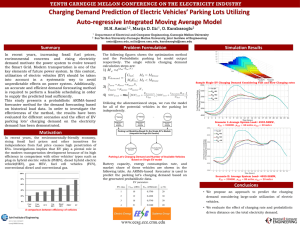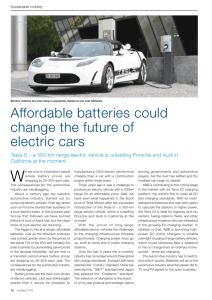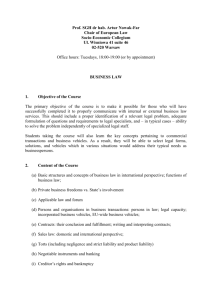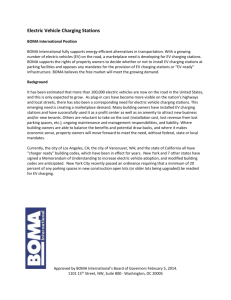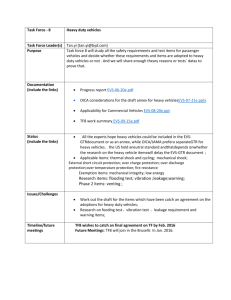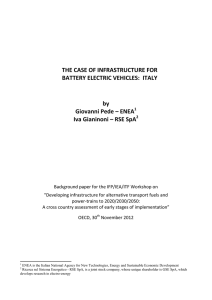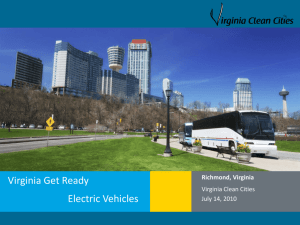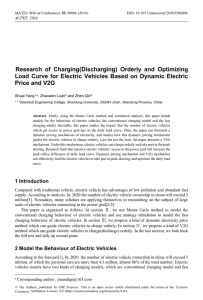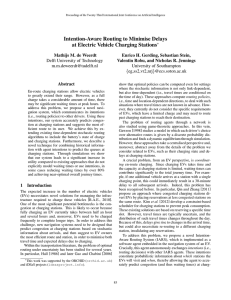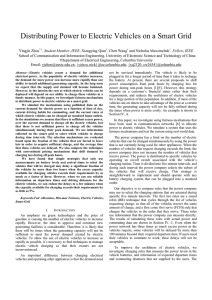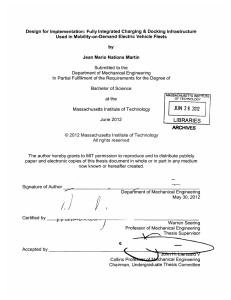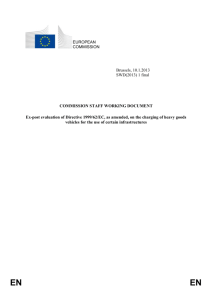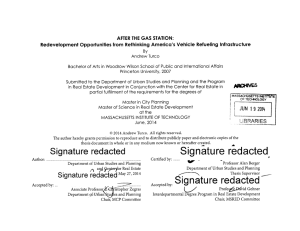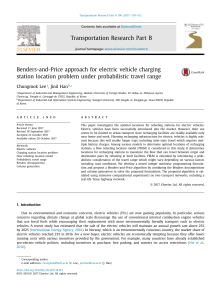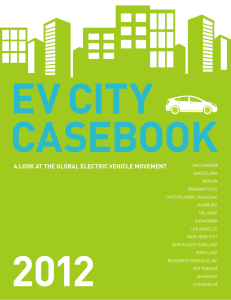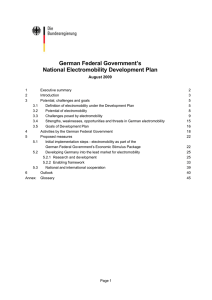DOC - Europa
advertisement
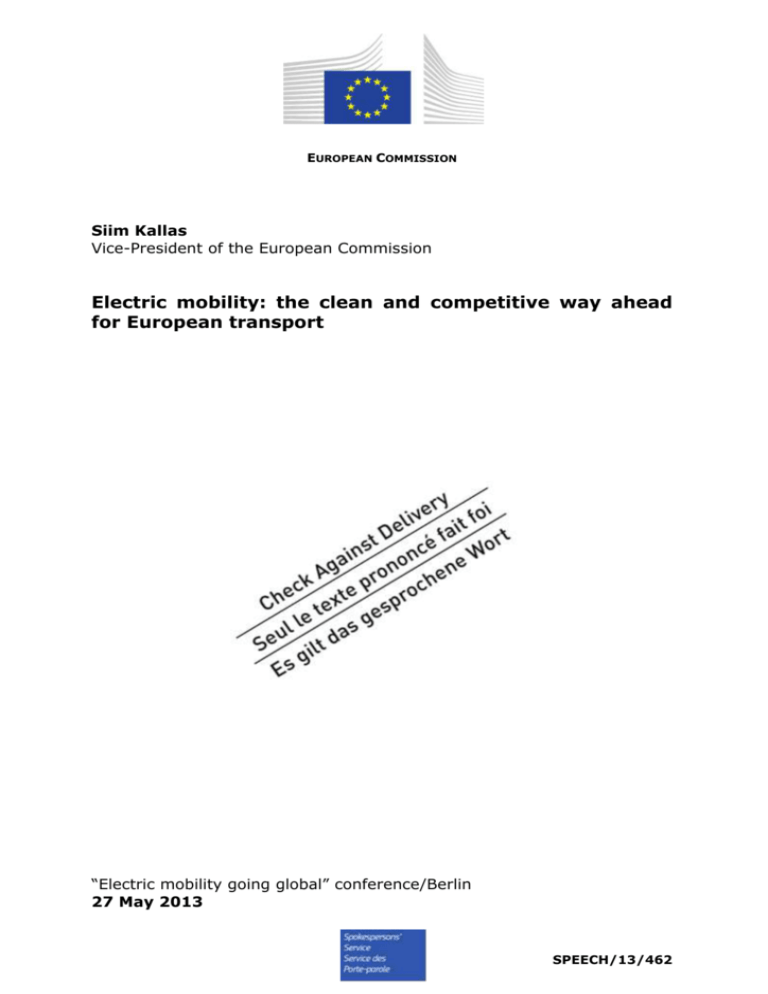
EUROPEAN COMMISSION Siim Kallas Vice-President of the European Commission Electric mobility: the clean and competitive way ahead for European transport “Electric mobility going global” conference/Berlin 27 May 2013 SPEECH/13/462 Minister Ramsauer, ladies and gentlemen Many thanks for inviting me to speak at today’s event. Europe needs a transport system that meets the basic needs of citizens, business and industry. It should not only link us effectively with our neighbours and the rest of the world, it must also be sustainable, reliable and safe. To achieve that goal means modernising and transforming our transport system as we gradually move towards a resource-efficient economy. One of the main problems is that Europe depends far too much on oil as a fuel source, particularly for road transport. Developing innovative and cleaner alternative fuels is an obvious way to reduce this dependence and the associated pollution. It will also give European companies a huge commercial opportunity. For transport as a whole, there is no “one fuel fits all” answer. Different means of travel will need different and appropriate options - perhaps electricity, perhaps hydrogen, a liquid biofuel or synthetic fuel. Or other alternatives that may not even exist yet. But for our towns and cities, electrification of road transport could radically change the way transport is organised. Urban areas are where a quarter of EU transport emissions originate, mostly from road congestion. With their high energy efficiency and zero tailpipe emissions, electric vehicles are ideally suited for road travel in urban areas. They move quietly and smoothly, so create less noise and vibration. Ultra-clean and silent buses would improve the image of public transport; clean and silent service and delivery vehicles would improve the quality of urban life. Hydrogen fuel cells could be used for on-board electricity production for medium-range vehicles. They could also replace diesel engines in trains. For some years now, the EU has been helping to prepare Europe’s transport sector for a low-carbon future by supporting clean vehicle technologies. Funding has been provided by the Green Car Initiative. One of the main projects is Green e-Motion, which aims to accelerate the market roll-out of electric vehicles. The Civitas initiative supports cities across Europe to help them introduce ambitious transport measures and policies towards sustainable urban mobility. When it started in 2002, electric car technology was in its infancy. Since then, Civitas has provided a platform for numerous European cities to turn their visions of electromobility into reality. This is all great progress. But it only goes so far: on the ground, we still face some very practical challenges. On the technical side, there are essential improvements that must be made in battery technology to boost market take-up of electric vehicles. Reducing their heavy weight, for example – this really limits the driving range. Also, normal recharging takes several hours, so fast charging or battery swapping could help to reduce this time. But the number one problem is infrastructure. 2 Full-scale deployment of electric vehicles has been held back by their high retail cost and low acceptance by consumers. Most significantly, there are not enough recharging and refuelling points. While a large part of the infrastructure needed to get these vehicles on the roads – national electricity grids – does exist, the charging points have yet to be developed. On numbers, these vary widely around Europe and are focused on key cities. Germany is one of the leading countries. It has well-established policies for promoting electromobility, with targets to expand the national network of hydrogen filling stations and increasing the number of electric cars to one million by 2020. The targets are backed by funding programmes and government-sponsored economic incentives such as lower taxation. Consumers will only reach this market if they can buy at a reasonable price and if there is enough accessible infrastructure for the vehicles to run. Without it, this market will not succeed, despite the huge investments that have been made. EU citizens do not yet feel confident enough to switch to other technologies. But if the infrastructure was more widespread - not just in a few cities, but across the EU – they could be convinced that with these mature technologies, it is time to invest in clean vehicles. To enable market take-up of alternative fuels, to create Europe-wide conditions to boost customer acceptance, we need national targets to build the necessary infrastructure. It has to be technically compatible everywhere. That doesn’t only mean the actual physical interface at the charging or refuelling point, where there are numerous variations around Europe – it also means standardised ways to pay in all EU countries, for example. This is to avoid a situation where a car travelling, say, from France to the Czech Republic across Germany cannot do so simply because the sockets at national charging stations are not compatible or because there is no machine for processing a particular payment card. If different standards exist alongside each other, it discourages potential investors, vehicle manufacturers and consumers. Consumers have to use different adaptors, while investors and manufacturers have to pay retrofit costs to adopt new recharging and refuelling systems. For electric charging points: at present, based on public statements, the network of private and public points is expected to increase significantly only in France, with 4.4 million points by 2020. In the rest of the EU, only 600,000 points are likely to be deployed by then. To avoid having a fragmented market, we propose that a minimum number of electric charging points should be available in each EU country by 2020. Of these, at least 10% should be publicly accessible. For hydrogen, we need a network to link existing fuelling stations and those planned along the main road transport corridors so that hydrogen vehicles can move around the EU. These stations should also be compatible in all countries. The aim is to have enough charging and fuelling points so that investors and companies find it worthwhile to mass-produce the cars at a reasonable price for a growing market where consumers will have enough confidence to buy them. 3 Ladies and gentlemen We have worked hard over the last 50 years to build a true internal transport market for Europe. So it is important now to avoid fragmenting this market with different technical standards across the Member States. This initiative promotes and strengthens the internal market even more. It encourages diversification of energy supply as Europe moves away from its dependence on oil. This was confirmed as a priority last week by EU leaders, along with the importance of building infrastructure for clean fuels. Being strong Europe is essential for EU industry to remain a world leader in this fast emerging sector and raise its global competitiveness. In turn, that will stimulate economic growth in Europe and create more employment, particularly in small and medium-sized enterprises. However, we need Member State support to proceed with this initiative, and sooner rather than later – because our rivals around the world are not sitting still. Some Member States have already taken the lead in defining their national strategy, which I naturally applaud. But there are still great differences around Europe, with some countries slow to make a start in this exciting and vibrant new sector that holds so much promise. To make sure we have the best chance to succeed with electromobility, we need a properly coordinated EU approach. I am sure I can rely on your support for this long-term strategy which holds so much promise. This is how we can all benefit - European consumers, industry and business, and of course the environment. Thank you for your attention. 4



